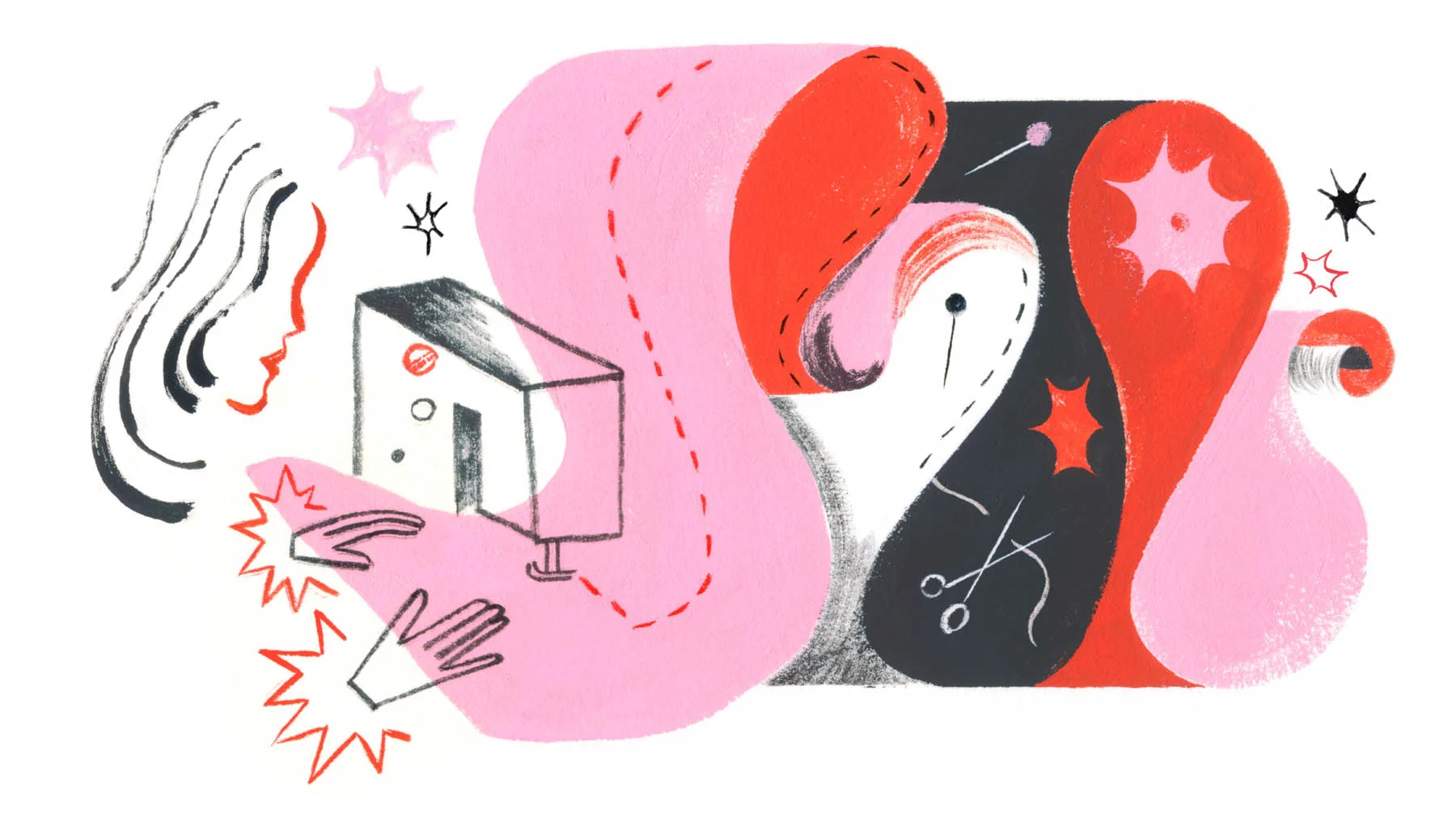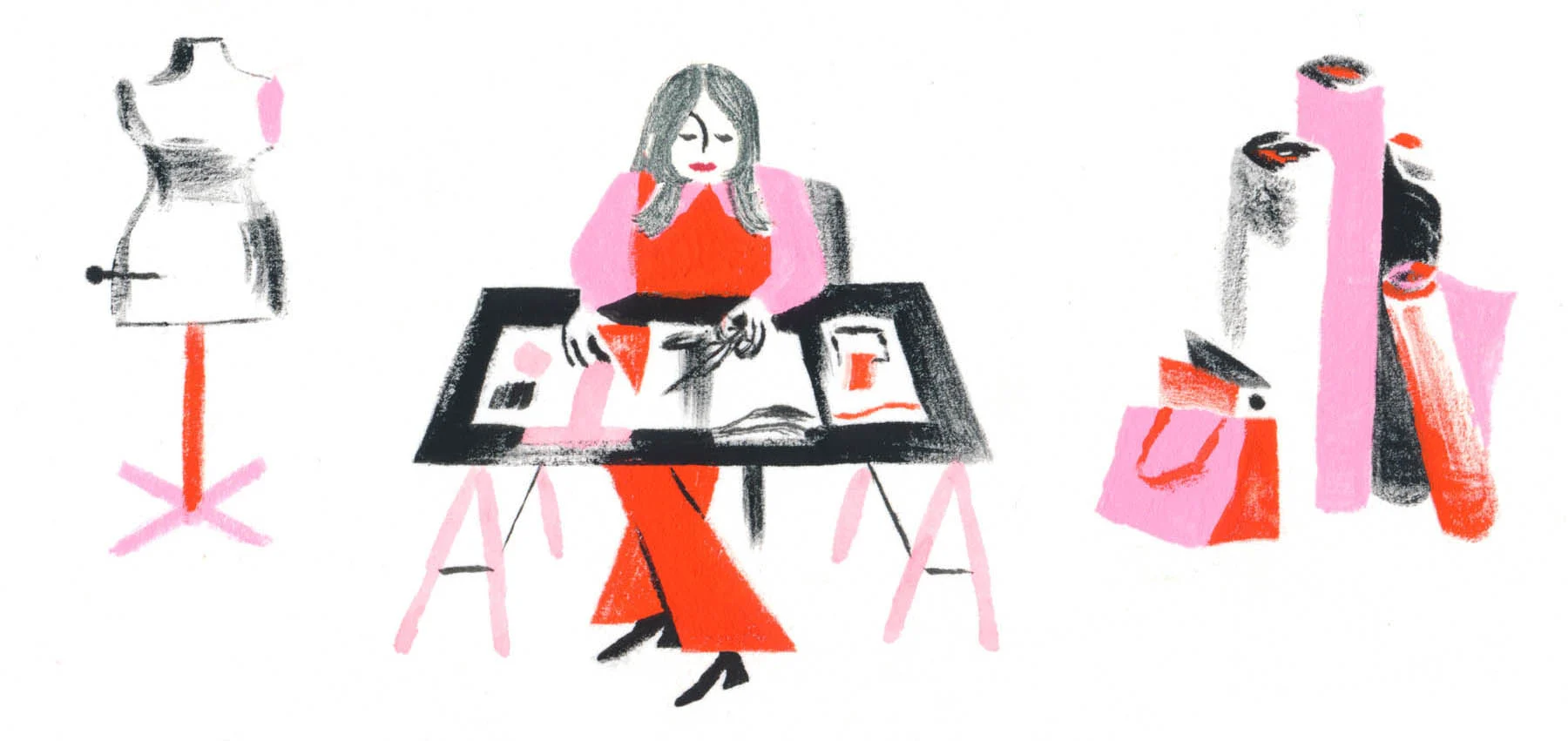

If only it was as easy as merely possessing a passion for fashion. Conceptualising, creating and selling your own designs in the digital age during the cost of living crisis can be an involved, risky business. In the first of this how-to mini-series with 1 Granary, writer and editor Aya Noël explores the reality of running your own independent fashion line.
Paula Canova del Vas had just graduated from the MA at Central Saint Martins when she was contacted by Dover Street Market, a luxury designer store, asking whether she would be interested in selling her collection. The then 25-year-old Canova del Vas had spent the previous seven years of her life collaging sketchbooks, draping fabric, and inserting pins. She had no idea how to price her garments or what a linesheet was. But decided to take the leap nonetheless.
Fast forward five years and the Spanish designer now works from her studio in Paris, where she shows on the official Fashion Week schedule. She manages a fully-employed studio team, as well as a network of artisans, and can set up a line sheet in her sleep. However, the learning curve was steep and not without pitfalls: “If I knew then what I know now, perhaps I wouldn’t have done it.”
The sentiment is not uncommon among independent fashion designers, who use their studies to focus on creative expression and personal development, only to think about the numbers after the first orders start coming in. “As a fashion designer, the biggest costs are the mistakes you make while you learn, and if you start to sell a lot of product fast, those mistakes can really add up,” says menswear designer Christopher Shannon.

How do I set up a business? Do I need outside investment? Which expenses are necessary and which should be skipped? Is investing in a fashion show worth it? Too often, emerging fashion designers only ask themselves these questions once they’ve already graduated, letting real-life experience do the answering for them. But setting up a fashion label comes with a wide array of hidden costs and financial surprises and it’s crucial not to let a lack of knowledge stand in the way of your dreams.
Before setting up your business structure, it is essential to define what product you want to make and who you’d like to see wearing it, without getting influenced by expectations of success. “Fashion is an extremely complex industry and there are many different paths into it,” explains Canova del Vas. “We have an idea of what success looks like—you need to be on fashion week and do the LVMH prize—but I have done a lot of these things, and they don’t necessarily translate to sales.” The conventional path might involve reaching out to wholesalers to sell your collection, but nowadays, more and more designers use social media to reach their audience directly. “I know a lot of people who do things handmade from home, direct-to-consumer, and they are as happy and as fulfilled as what we’re told we should be.”
As a fashion designer, the biggest costs are the mistakes you make while you learn, and if you start to sell a lot of product fast, those mistakes can really add up.
Don’t expect to make a living selling your designs straight away. Most independent designers freelance or consult the side to support their business. In some cases, a fashion business might never become fully financially viable, says Shannon. “Don’t be fooled into thinking the money will come from the wholesaling of clothes. It’s always the collabs that keep it all ticking over, or doing a line of expensive handbags or trainer deals. That’s where the money is.”

The first expense of any designer is usually the rent of their studio. Where universities offer ample space and access to equipment, setting up a label means making those investments yourself. “It’s intense. You graduate and suddenly you have to leave the studio too. It took me a while before I found the right place. I wanted to work and sell my clothes but I had no space to do that yet,” says Charlie Constantinou, who graduated from Central Saint Martins in 2022 and, like many of his peers, started his brand organically after his graduate collection caught the attraction of wholesalers.
Shannon advises young designers to think the location through and resist the temptation of a capital city, which might look good on Instagram but doesn’t feel nearly as good in your bank account. “I always tell people to avoid setting up in London if they can. It drains everything. By the time you’re done renting a studio, an apartment, and some storage, your money is already gone.”
Another unexpected expense lies in the sudden volume increase. As a designer, you’re trained to think about the individual creation, slowly turning your ideas and concepts into a material product. Producing those same designs in a series comes with a different challenge. “You don’t realize until you start sourcing on a production level how big the quantities are,” explains Constantinou. “As a student, you buy as you need, so you never buy those big stocks. Now, I suddenly needed to respond to orders, so I had to buy in bulk. It’s a shock, the first time you buy a 100-meter roll of fabric.”
Then there are the administrative traps. Though a career in fashion might look very different for everyone, there wasn’t a single designer who didn’t agree on the importance of registering your trademarks. It’s a cost most people aren’t prepared for. “I registered mine in China and while I applied, there were counterfeits already,” shares Ancuta Sarca, a London-based shoe designer. It’s a challenge for fashion companies of all levels, but the legal battles around trademark infringements are particularly draining for young designers, who do not have the financial backing to cover legal fees.
Insurance is another surprise expense for young designers. If you want to hire an intern to assist you during fashion week, for example, you need public liability insurance. Hiring a team, more generally, is always more expensive than designers initially calculate. “It’s very important to build your team and work with the same creatives season after season, whether it’s your stylist or head of sales,” says Canova del Vas, stressing that the process of finding the right collaborators was one of trial and error—and a lot of patience. “In the beginning, I was very overwhelmed trying to build my team, but now I understand it’s a long game. I still don’t have all the pieces of the puzzle, but I’m starting to understand how I need to get there.”

I always tell people to avoid setting up in London if they can. It drains everything. By the time you’re done renting a studio, an apartment, and some storage, your money is already gone.
Canova del Vas highlights how much her business relies on a strong network and good relationships. “Fashion is perceived as so individualistic, but from my experience, it’s all about teamwork. It would be impossible to do this by yourself.” In school, fashion students are taught to focus on themselves, and collaborative exercises remain a rarity. But this attitude doesn’t work in the industry, where you constantly need to negotiate or pull in favors to get big projects over the line.
One particular example where good connections come in handy are MOQs, or minimum order quantities, a standard set by most factories. Factories refuse to produce unless you order a certain amount and rarely make exceptions to the rule—unless you have a personal connection. “I see doing my production locally as such an advantage. If I couldn’t be physically in the factory, I don’t know how I would be able to manage it. Because I do everything locally, I don’t have MOQs,” shares Constantinou.
That closeness is equally important when it comes to the relationship with your retailers. Robyn Lynch, a menswear designer based in London, explains that she gathers crucial information from each sales conversation, and uses it as a base for her design process. “It also comes down to commerciality and what actually sells,” the Irish designer explained. “It’s all well and good to sit in a library for three months and find inspiring images, but having that conversation with buyers and knowing what sold out, is equally valuable.” That includes communicating your design choices so you can reach the consumer. “Otherwise, it just ends up on the e-commerce site with a flat picture and a tiny description. What kills me is when it says something like ‘100 percent polyester’ and I just think, ‘I’ve used ocean waste, recycled nylon, and recycled fibers!’ Having that level of communication throughout the chain is so important to justify the price point.”
There is one point no designer seemed to agree on, and that’s the cost and benefit of a PR agency. “No brand has a product that works for every market, so the PR company that works for a good friend of mine, might not work for me,” says Canova del Vas. The problem is that the costs can mount very quickly, while the benefits are more difficult to calculate. There are horror stories of PR agents taking a single journalist to a five-star restaurant on the budget of an independent designer. Shannon suggests not to pay for PR “unless they can bring you projects that you both benefit from rather than just paying a retainer. There are much cheaper ways to do off-schedule shows and events.”

That logic also applies to fashion shows. “I’m showing at fashion week and I do question whether it’s worth the cost. I have sponsors for the creative team but there are so many other costs, like delivery, shipping, sets and models. You always spend more than you plan to,” says Sarca, who is still debating the advantages of a seasonal presentation. Lynch, on the other hand, firmly believes that a show provides a sense of authority that would be difficult to find elsewhere. In addition, sharing the Vogue Runway images with the people who made her clothes helps them feel invested in the product and build a solid relationship with her production collaborators.
Navigating these financial pitfalls, balancing costs versus benefits, and overseeing the budget for material sourcing, production, distribution and communication is an incredible feat, especially for those who hoped to dedicate their lives to creative expression. This constant tug and pull between want and need can wear you out, which is why most designers ended the interview with a warning—to manage your own mental health before anything else.
“If you make this your entire life, and you have a shit day, it feels like your life is shit,” admits Canova del Vas. “You need to be able to gain perspective and take care of yourself. You need a light at the end of the tunnel.”

